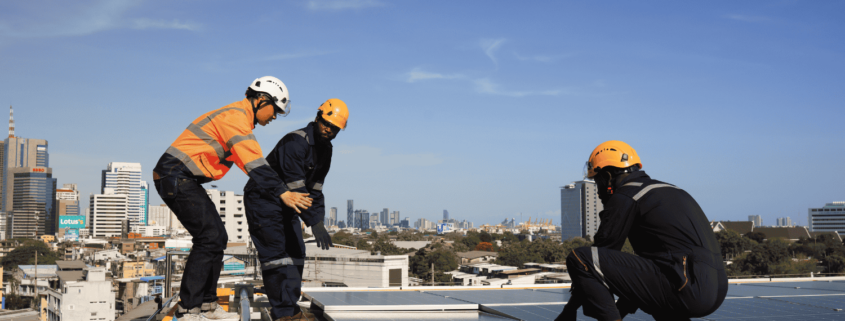How Do You Repair a Flat Roof? Common Issues and Expert Solutions
How do you repair a flat roof when it’s showing signs of damage like leaks or cracks? Being aware of these common issues and knowing how to fix them promptly can aid in extending the lifespan of your roof significantly. This guide will cover all the essential steps you need to identify, prepare, and repair a flat roof effectively.
Key Takeaways
-
Identify flat roof issues early, including cracks and water pooling, to prevent costly repairs.
-
Regular inspections and effective cleaning are crucial for proper maintenance and to extend your roof’s lifespan.
-
When damage is severe, consider hiring a professional contractor to ensure safe and effective repairs.
Identifying Flat Roof Issues
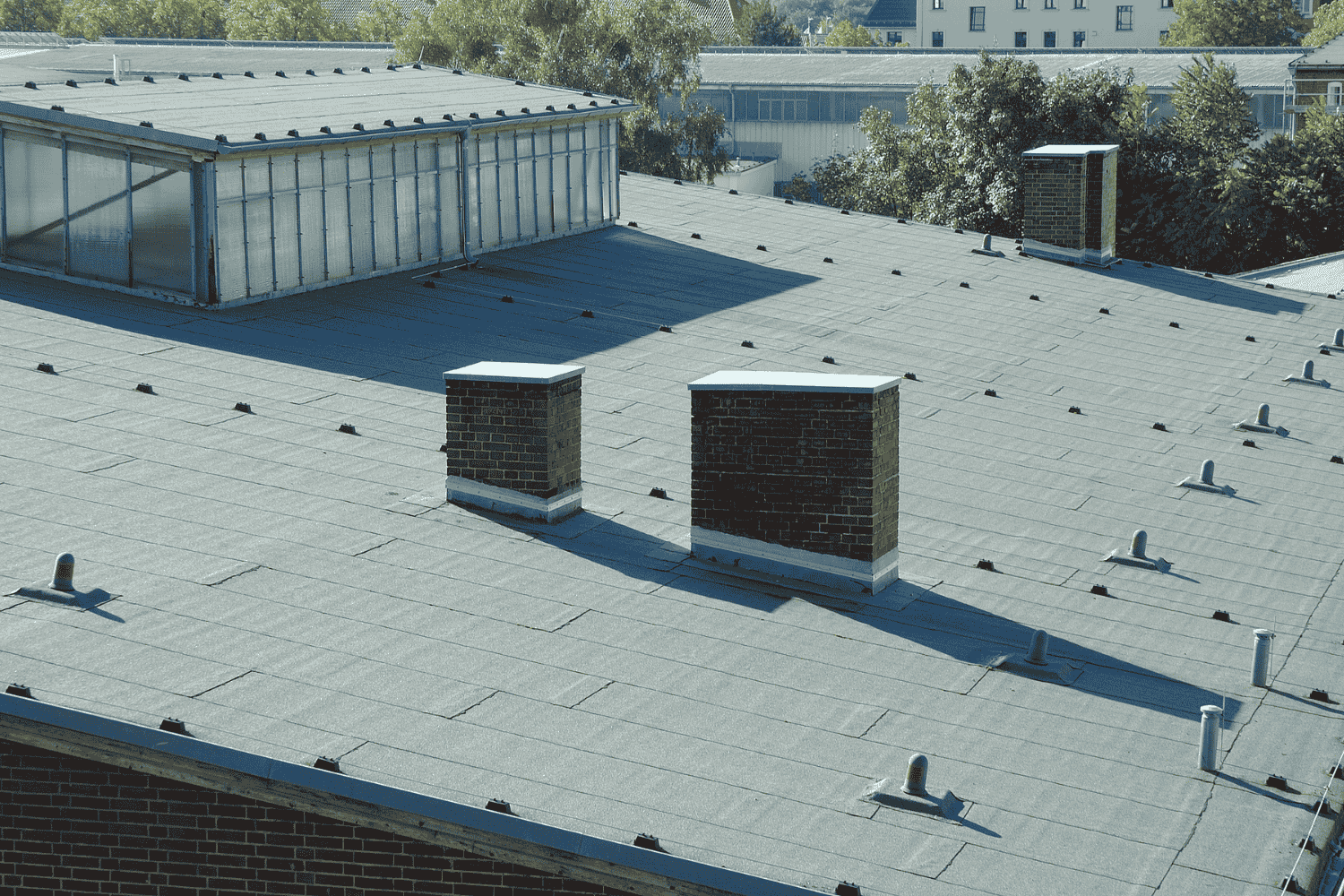
Before starting repairs, identify any issues your flat roof might have. Common signs of damage include pooling water, visible cracks, blisters, sagging, and leaks. Regular inspections are crucial in catching these issues early. When doing inspections, look for visible damage like cracks, blisters, or sagging, as these could signify more severe problems that require expert evaluation. Keep in mind that non-obvious damage, such as adhesion failure, may need a professional inspection to detect.
Common Causes of Flat Roof Damage
Flat roofs are susceptible to various types of damage. Natural disasters like heavy storms can severely compromise flat roofs and prolonged exposure to UV rays can deteriorate damaged roof material, leading to additional vulnerabilities. Aging roofs can experience membrane separation, making them more prone to leaks and structural damage. Additionally, improper installation techniques are a significant factor in the early failure of flat roofs.
Inspecting Your Flat Roof
Regular inspections help maintain the integrity of your flat roof. Identify cracks and signs of membrane wear to prevent further damage. Check for water pooling, as stagnant water can cause sagging and leaks if not addressed. Document your findings to help plan for necessary repairs.
Preparing for Flat Roof Repair
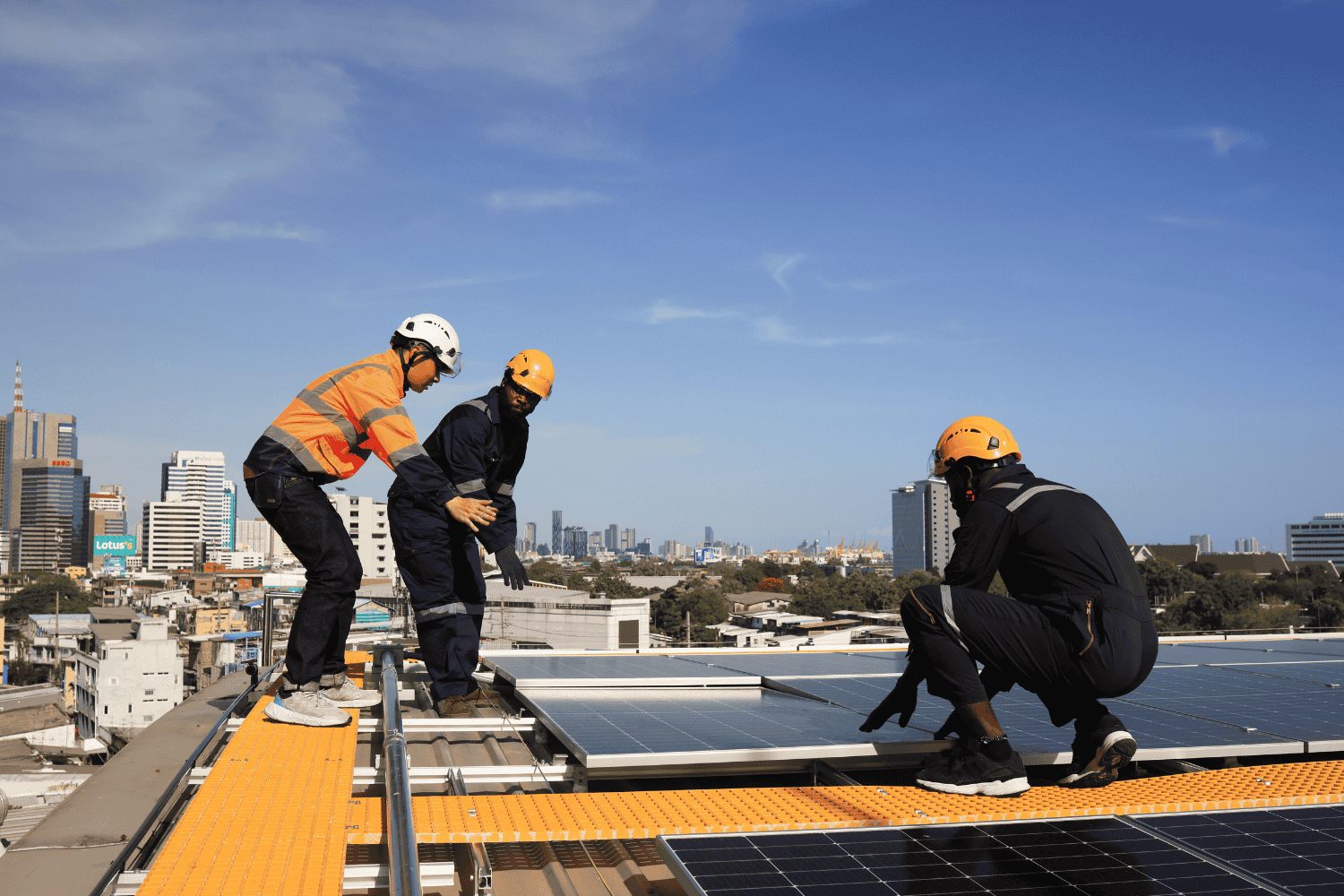
Preparation is key to effective flat roof repairs. Start by gathering the necessary tools and materials. Planning the repair process methodically, considering the type of damage and required materials, is essential for a successful outcome. Safety should always be a priority. Use stable ladders, wear non-slip shoes and gloves, and ideally, work with a partner to ensure help is readily available in case of emergencies.
Tools and Materials Needed
Various tools and roof material are needed to repair a flat roof, such as roofing cement, fiberglass mesh, and appropriate adhesives depending on the roofing system. A utility knife is essential for cutting roofing materials accurately during repairs. Safety gear, including gloves and goggles, is vital when handling roofing materials to prevent injuries.
Safety Precautions
Due to the environmental hazards associated with flat roofs, taking safety measures while repairing them is essential. Use stable ladders, wear non-slip shoes and gloves, and always work with a partner to ensure additional security and help in case of emergencies.
Fixing Small Leaks and Cracks
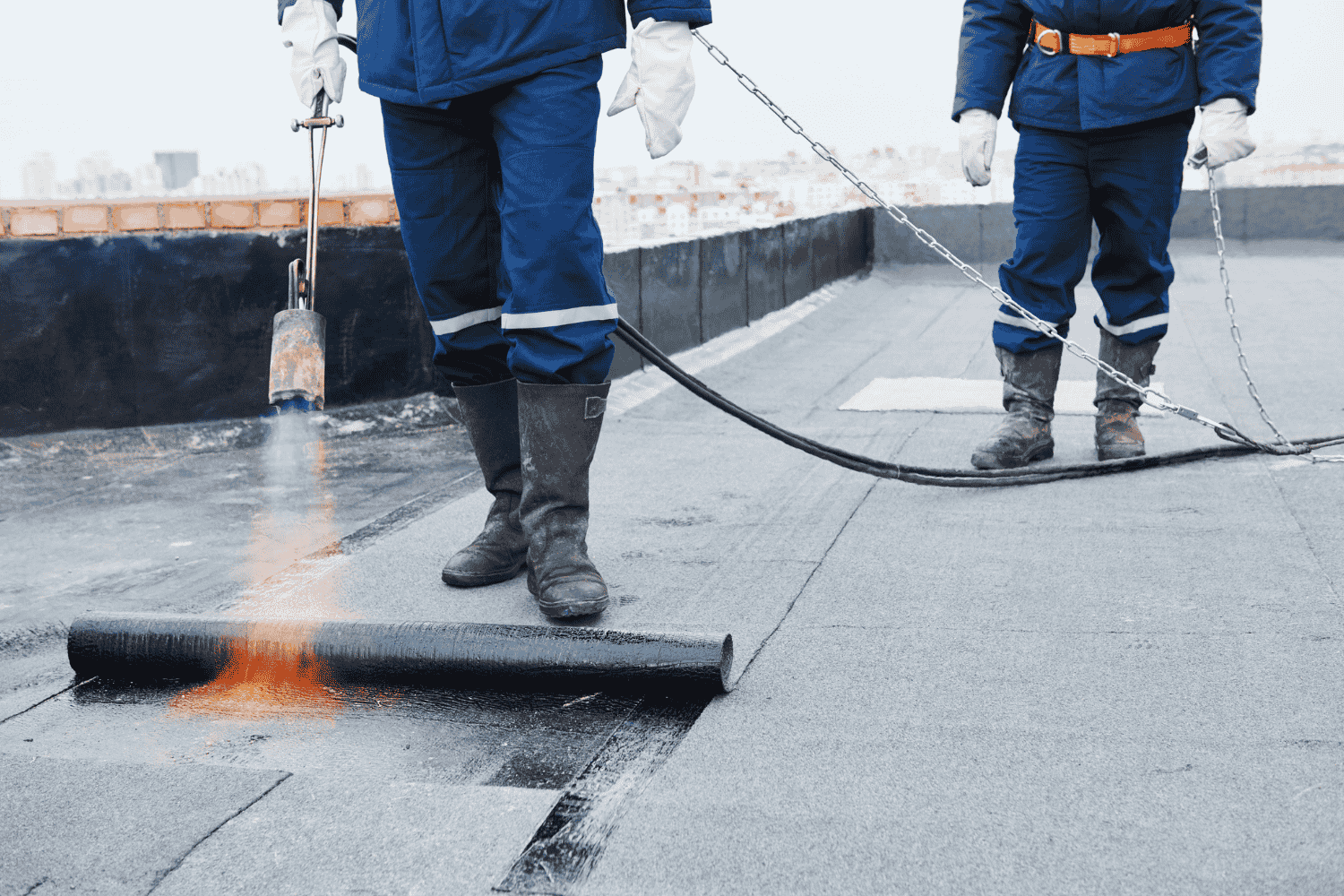
Small leaks and cracks can lead to more significant issues if not addressed promptly. Before applying any repair materials, clean the area thoroughly to remove dirt, gravel, and water. Using a utility knife, carefully eliminate any damaged roofing material to prepare the area for repairs. Ensure the area is dry completely to achieve effective adhesion of the repair materials.
Apply roofing cement generously over the mesh once it is embedded to seal small leaks effectively. Wear non-slip footwear to prevent falls while working on the roof. Stable ladders and working with a partner enhance safety during the repairs.
Addressing Larger Issues
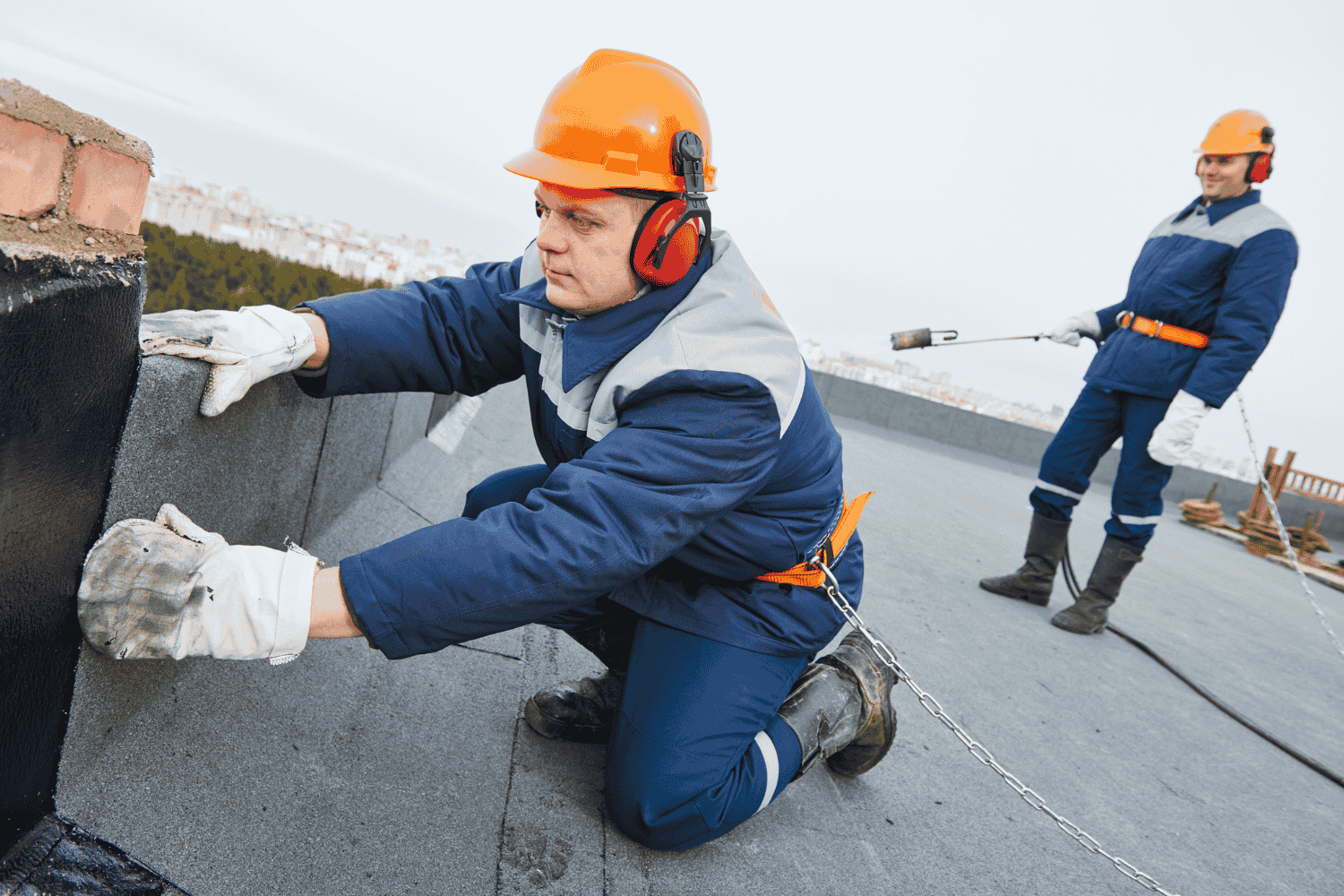
Larger issues like blisters and delaminations require more attention. Inspecting for blisters is vital, as they can indicate trapped moisture that may compromise the roofing structure.
Blisters on a tar and gravel roof can be fixed by carefully cutting the blister with a utility knife to create a flap, allowing moisture to escape. Let the area dry completely before proceeding with the repair to avoid trapping moisture. Apply a generous amount of roofing cement to the exposed area, ensuring it covers all edges of the cut material. Embed a fiberglass mesh into the roofing cement and then apply an additional layer of cement to ensure a solid seal.
Improving drainage on your flat roof prevents ponding. Inspect around drains and scuppers to ensure they are clear and functioning properly. Keeping gutters and downspouts clear of debris is essential to prevent water pooling on the roof. Identifying low spots on the roof and elevating them can help improve drainage and reduce the risk of water pooling.
When to Consider Professional Help

Sometimes, the extent of roof damage requires professional assistance. Evaluating the severity of roof damage by checking for widespread leaks, structural integrity issues, or extensive wear is crucial. If you encounter complex problems such as significant leaks or structural damage, it’s best to seek professional help.
Choosing the right roofing contractor involves ensuring they are experienced, checking references, and understanding the warranties on their work. A contractor with specialized experience and proper insurance can avoid future complications.
Evaluating the Extent of Damage
Common signs of severity in flat roof damage include visible leaks, extensive cracking, and large areas of ponding water. To assess damage severity, inspect for blisters or delaminations, which can indicate underlying issues with the leaking flat roof.
If you find extensive damage or multiple problem areas, it’s advisable to seek the help of a professional roofing contractor.
Choosing the Right Roofing Contractor
Hiring a contractor with specialized experience and proper insurance avoids future complications. Checking references and past project quality can help ensure you select a reputable professional flat roof contractor.
It is advisable to choose a contractor who provides a written estimate and has a solid warranty to ensure protection for the repairs made.
Maintenance and Prevention Tips
Regular maintenance practices can significantly extend the lifespan of flat roofs by addressing potential issues before they escalate. Creating a maintenance budget helps anticipate future roof repairs, accounting for routine inspections and potential unforeseen issues.
Proper maintenance and timely repairs of tar and gravel roofs can significantly prolong their lifespan, reducing the need for costly replacements. Reapplying gravel on a tar and gravel roof is necessary to maintain its protective layer and prevent exposure of underlying materials.
Routine Inspections and Cleaning
Regular inspections and maintenance of drainage systems prevent water accumulation on flat roofs. Clearing debris from roof drains maintains proper water flow and prevents ponding.
Maintaining clear drains and identifying low spots on a tar and gravel roof is crucial to prevent water pooling, which can lead to significant roof damage.
Protective Coatings and Sealants
Applying protective coatings on flat roofs can prevent UV damage and moisture intrusion, enhancing the roof’s durability against environmental stressors. Coatings can also improve energy efficiency by reflecting sunlight and reducing heat absorption.
Using protective coatings and sealants is crucial for maintaining the integrity and longevity of flat roofs. A bitumen roof sealant and roof coating can be effective options for this purpose.
Cost Considerations
Understanding the costs involved in flat roof repairs versus replacement is essential for budgeting and planning maintenance. Repairing a flat roof generally costs less than full replacement, making it a more viable option when the damage is minimal. Repair costs can vary widely based on the extent of damage, type of materials used, and labor charges in your area.
Replacing a flat roof typically requires a higher initial investment, but it can offer more durability and a longer lifespan.
Setting aside 1-3% of your property’s value annually for maintenance can help cover unexpected flat roof repairs. Repairing a flat roof typically costs less per square foot than a full replacement, but extensive damage may tilt the cost in favor of replacement.
Summary
Maintaining and repairing a flat roof is essential to prevent extensive damage and costly repairs. Identifying issues early, preparing adequately, fixing small leaks and cracks, addressing larger issues, and knowing when to seek professional help are key steps in ensuring the longevity of your roof. Regular maintenance and protective coatings can further extend the roof’s lifespan, making it a valuable investment. By following these expert tips, you can confidently handle flat roof repairs and keep your roof in top condition.
Frequently Asked Questions
What are the common signs of flat roof damage?
If you notice pooling water, visible cracks, blisters, sagging, or leaks on your flat roof, it’s time to take action. Address these issues promptly to maintain the integrity of your roof and protect your space!
What are the causes of flat roof damage?
Flat roof damage often stems from natural disasters, UV exposure, aging materials, and poor installation. Taking proactive steps to address these factors can help you maintain a secure and durable roof.
What tools and materials are needed for flat roof repair?
To successfully repair a flat roof, you’ll need roofing cement, fiberglass mesh, safety gear, and a utility knife. Gather these essential tools and materials to ensure your project goes smoothly!
When should I consider hiring a professional roofing contractor?
You should hire a professional roofing contractor when you face major leaks, structural damage, or repairs that go beyond your capabilities. Don’t hesitate to seek expert help to ensure your roof is safe and secure!
How can I maintain my flat roof to prevent damage?
To effectively maintain your flat roof and prevent damage, conduct regular inspections, clean the drains, apply protective coatings, and budget for ongoing maintenance. Taking these proactive steps will ensure your roof remains in great condition for years to come!

